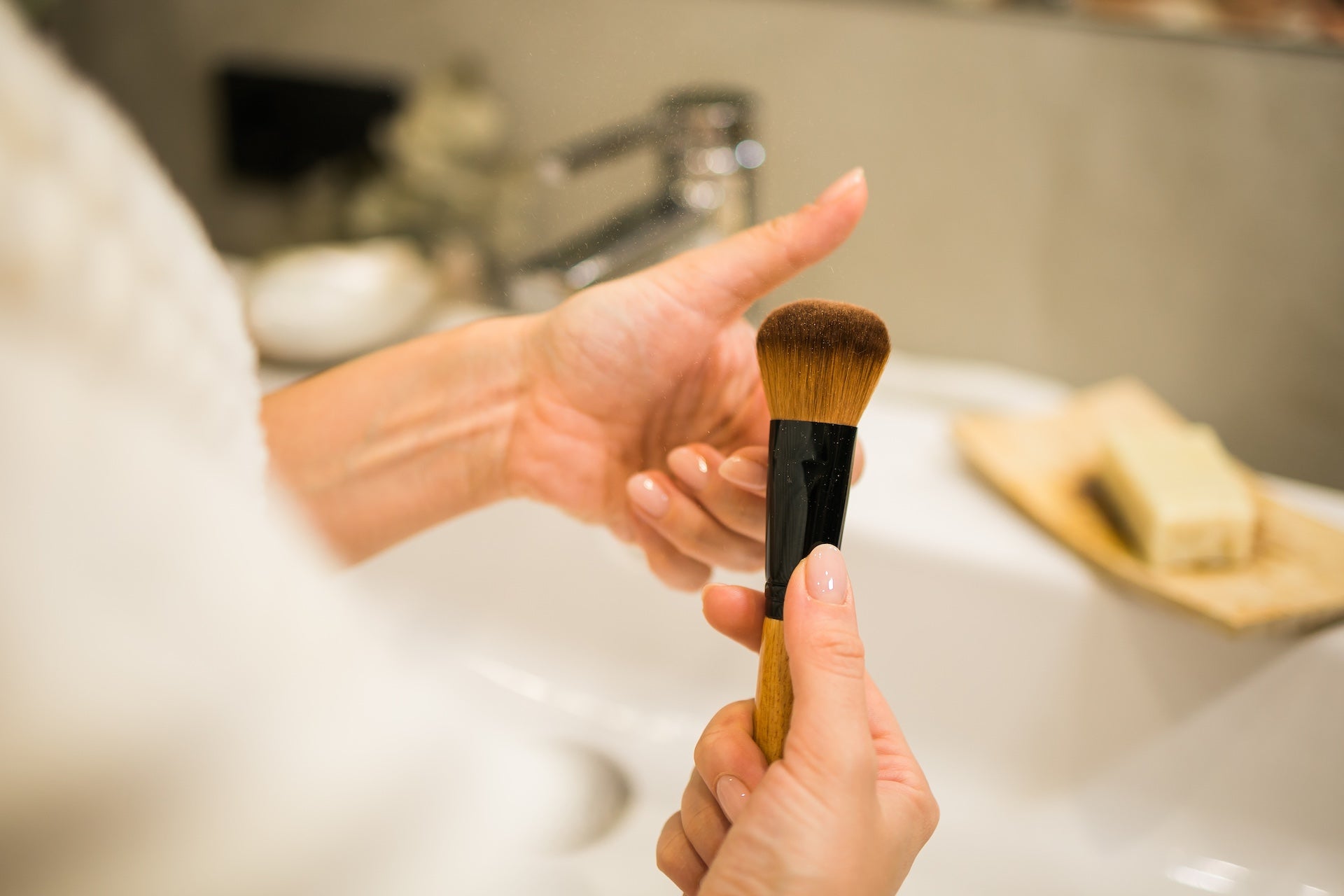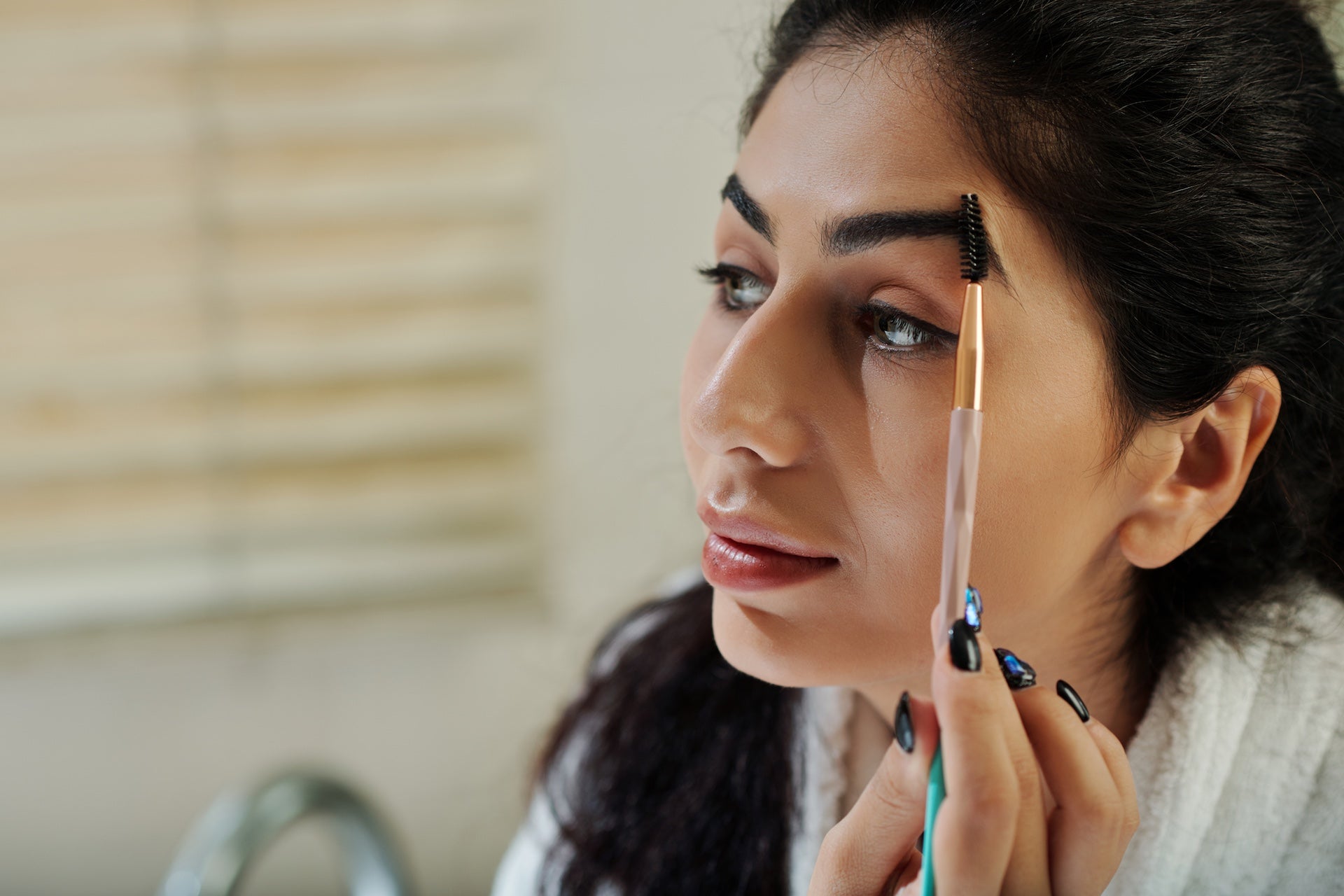
How to Clean Your Foundation Brushes?
How your foundation brush contributes to the frequent acne breakouts you notice in your skin
Do you know that using dirty makeup brushes can transfer dirt and bacteria to your skin leading to clogged pores and acne breakouts?
Put an end to the frustrating allergic reactions you experience in your skin by washing your foundation brush with Trend Tree’s tips.
But before we go over how to maintain your makeup brushes, let me share a small story about Sangeeta.
Due to her busy work schedule, Sangeeta was always too busy to clean up her foundation brush.
She was accustomed to the daily routine of getting home late, waking up early, and giving herself a little brush-up of makeup before leaving for work.
This habit of using foundation brushes without cleaning them became unbreakable. As time went on she started noticing little changes in the texture of her skin.
Unknown to her the dirt from her unclean foundation brush was getting deeper into her pores resulting in an acne breakout.
Her unwashed makeup brush was transferring dirt, Oil, and bacteria to her skin.
She began to notice redness and a few allergic reactions in her skin. These challenges were triggered by the dirt in her brush.
She started experiencing skin dryness and dullness. It didn't take time before her colleagues began to notice the changes in her facial appearance, her office crush no longer found her attractive.
At first, she thought it was just stress, but after giving herself some time to rest, she noticed that her skin issues persisted.
That was when she decided to visit her long-forgotten personal dermatologist for help. After narrating her skin predicament, her dermatologist revealed to her the main cause of the dryness and dullness she experienced in her skin and how to put an end to it.
This same solution is what I'm about to reveal to you in this blog.
Foundation brushes can dry and harden making removal difficult. This is a result of the residual makeup left in the brushes after use.
Cleaning these brushes can be tedious at times coupled with the several hours of waiting you have to undergo before they dry.
Your foundation brush if properly cleaned can reduce your chances of having an allergic reaction in your skin. It could also improve foundation application and blending by 35%.
Here are 5 Potential Challenges you may encounter when you don’t clean your Foundation Brush regularly
1. Breakout and Acne - Research by the American Academy of Dermatology revealed that using dirty makeup brushes can transfer dirt, oil, and bacteria to your skin, leading to breakout and acne.
2. Clogged Pores - Your skin is made up of tiny holes called pores. Dirty brushes can push dirt and bacteria deeper into pores, resulting in breakouts.
3. Skin irritation - Ever wondered why you sometimes experience irritation and redness in your skin?
Failing to clean your foundation brush might be a major contributor to this anomaly. Unclean brushes could trigger skin irritation, redness, and inflammation.
4. Brush Damage - The lifespan of your brush could be sliced into smaller units due to inadequate knowledge of how it should be cleaned.
5. Infection Risk: Sharing dirty brushes or using them on multiple people can spread infections.
How to Clean Your Foundation Brush
In this blog, we’ll go through some Brush cleansing techniques to extend the lifespan of your foundation brush for improved performance:
1. Soap and Warm Water Method
Dip the bristles of your foundation brush into warm water, then massage a small amount of mild soap into the bristles. Rinse thoroughly with warm water, then shape the brush and allow it to air dry.
2. Shampoo and Conditioner Method
Massage a small amount of shampoo into the bristles, then rinse with warm water. Follow up with a small amount of conditioner to help restore moisture to the bristles.
3. Baby Shampoo and Warm Water Method
Mix a small amount of baby shampoo with warm water, then massage the solution into the bristles of your foundation brush.
4. Olive Oil and Soap Method
Mix a small amount of olive oil with mild soap, then massage the solution into the bristles. Rinse thoroughly with warm water, then shape the brush and allow it to air dry.
Now you’ve discovered the steps you need to take if you desire to extend the lifespan of your foundation brush.
Your sensitive skin doesn’t deserve the irritation and acne breakout that an unclean foundation brush offers.
Want to ensure an even application of foundation and rid yourself of the risk of skin irritation and allergic reactions?
Which method will you try first?
you’reIf looking for a soft and high-quality makeup brush or sponge, be sure to visit Trend Tree’s website!
Written By Ritikka Puranik'



